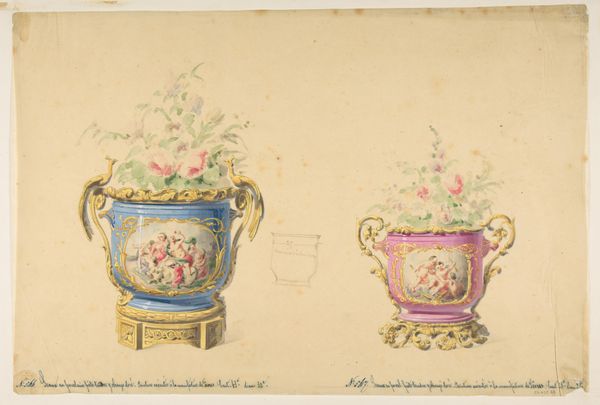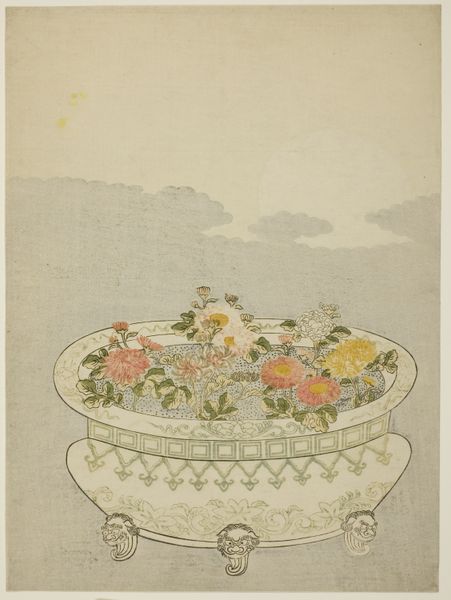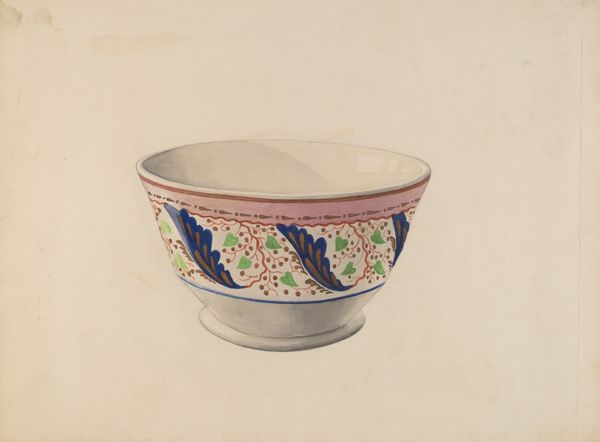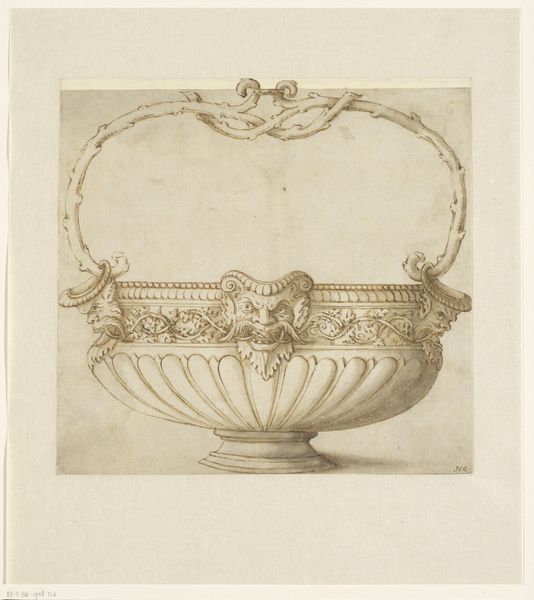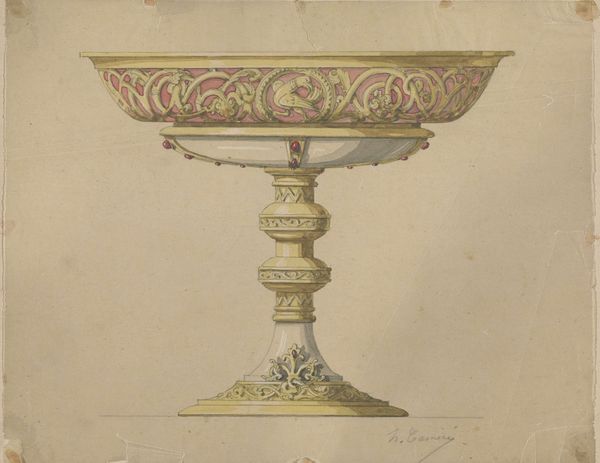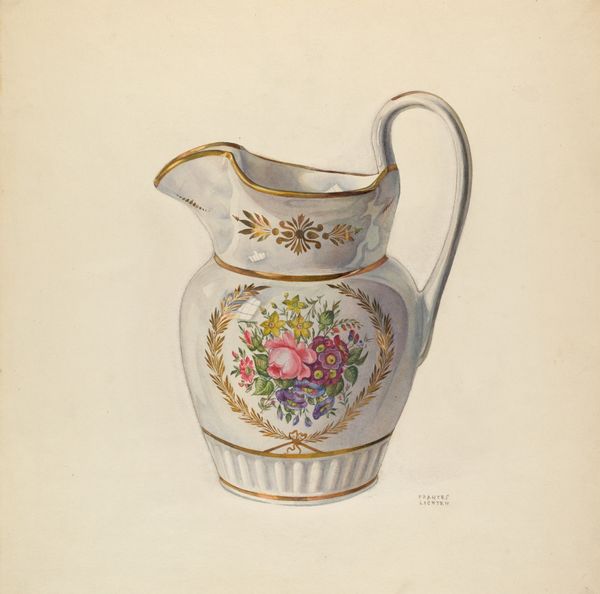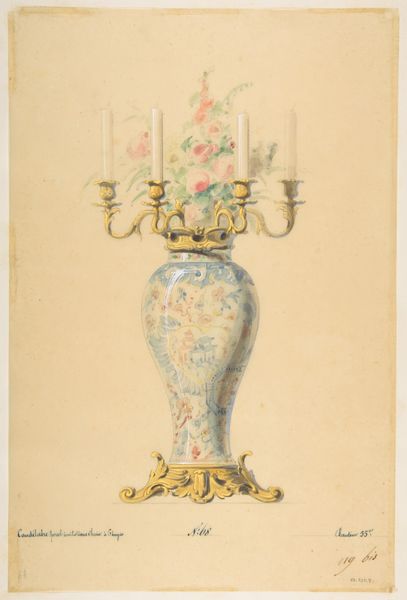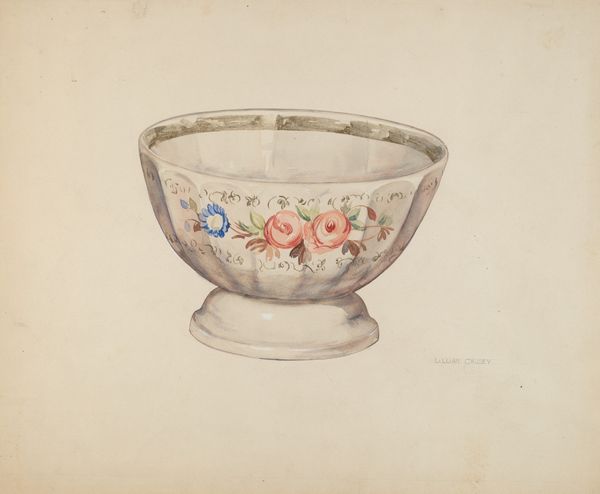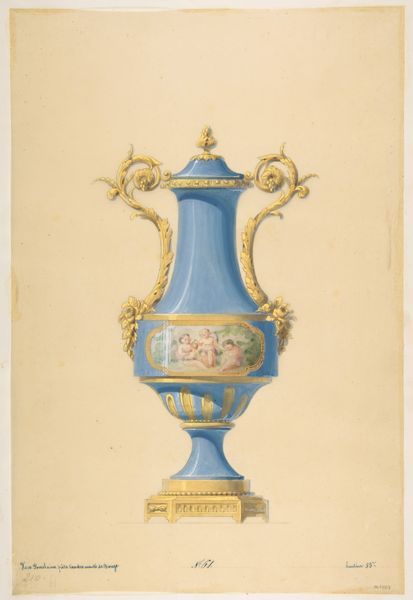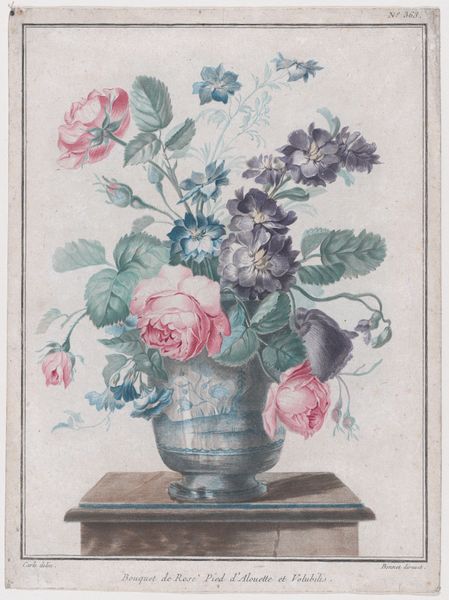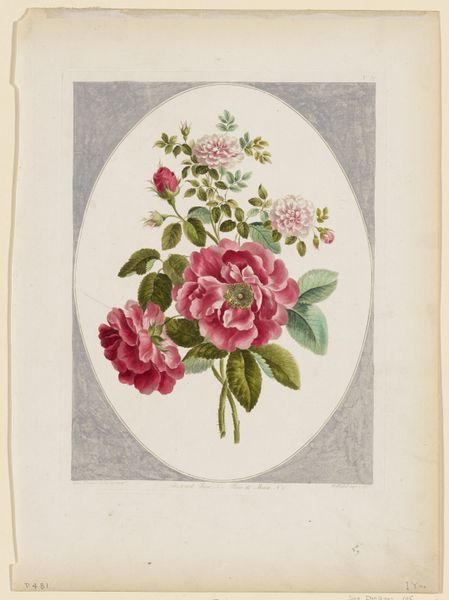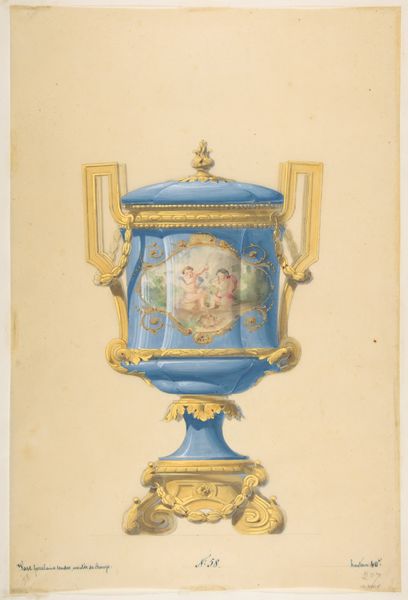
drawing, coloured-pencil, print, watercolor
#
drawing
#
coloured-pencil
#
water colours
# print
#
watercolor
#
coloured pencil
#
romanticism
#
decorative-art
Dimensions: sheet: 11 x 15 7/16 in. (28 x 39.2 cm)
Copyright: Public Domain
Curator: Take a look at this beautiful 19th-century design for a Jardiniere, currently residing at the Metropolitan Museum of Art. It's rendered with watercolor and colored pencil, offering a delicate and intricate vision for a decorative planter. Editor: My first thought? It’s intensely romantic, almost saccharine. All those pink roses overflowing from what looks like porcelain...it’s a celebration of opulence. Curator: Opulence is definitely a key element. Notice the contrast between the delicately rendered floral arrangement and the robust, almost baroque, golden base and handles. The use of gold suggests considerable value, and the little cherubic figures indicate this object would have been created for an aristocratic patron, reinforcing societal hierarchies through aesthetic beauty and luxury. Editor: Precisely! And those cherubs, along with the roses, tap into established symbolic codes. Roses have long been associated with love, beauty, and secrecy, making this more than just a pretty object. It speaks to aspirations, desires and hidden meanings within elite social circles of that period. What's intriguing is how the design blends classical elements with more contemporary floral motifs. Curator: Right, the blend is significant. This would have required highly skilled artisans – ceramicists, metalworkers, painters, all contributing to a single object destined for display and functional use. Think about the labor conditions, the organization of workshops… a real confluence of material expertise and creative direction. I find it compelling how a relatively modest medium – watercolor – can suggest such lavish materials. Editor: I agree. The choice of flowers as subject matter itself has symbolic resonance too. Were these specific varieties chosen for their association with particular virtues or figures? Was this intended as a wedding gift perhaps, or to commemorate some special event? We are prompted to imagine it inside a privileged home as a vibrant focal point—filled perhaps with equally carefully selected living plants. Curator: The draftsmanship itself deserves attention. This isn't merely representational; there are calculations, suggestions of depth and form – a technical drawing combined with artistic flourish to sell a concept. So, ultimately, the final product is inextricably bound to the conditions and culture that produced it, and even consumption trends around interior décor. Editor: Well, seeing through that lens, it goes beyond decoration and tells a nuanced cultural story. Examining it offers insights into desire, skill and aesthetic sensibility of the time. Curator: Precisely, from the perspective of material conditions to emotional symbolism, there's plenty here to consider beyond just prettiness.
Comments
No comments
Be the first to comment and join the conversation on the ultimate creative platform.
